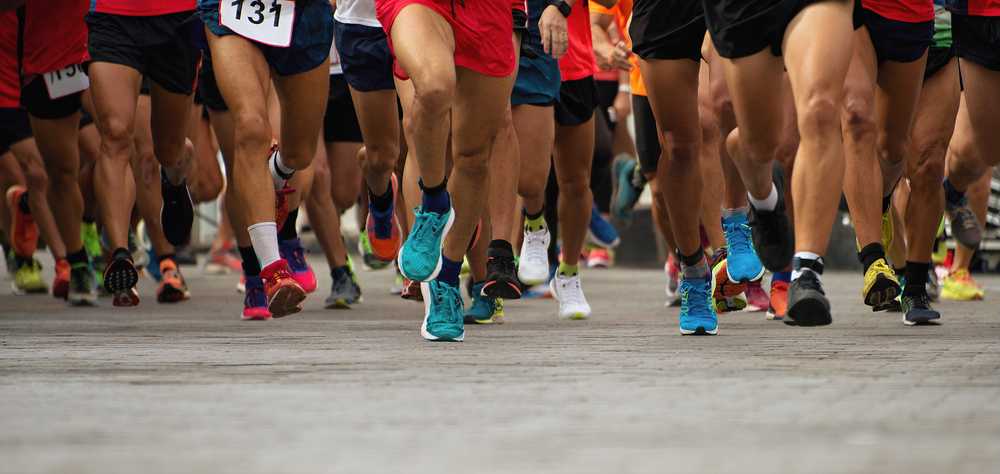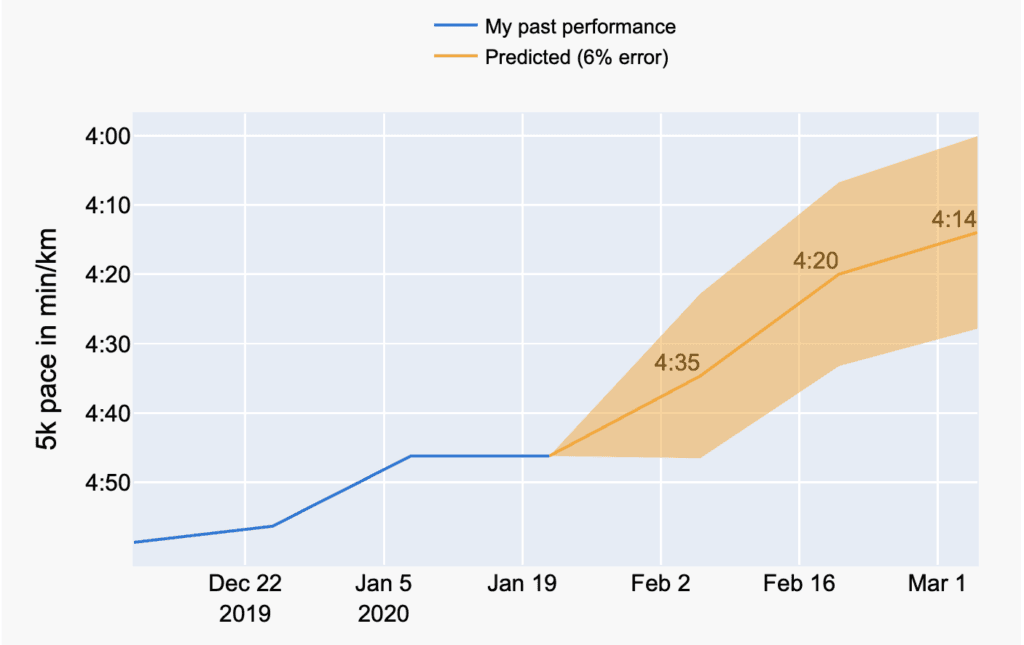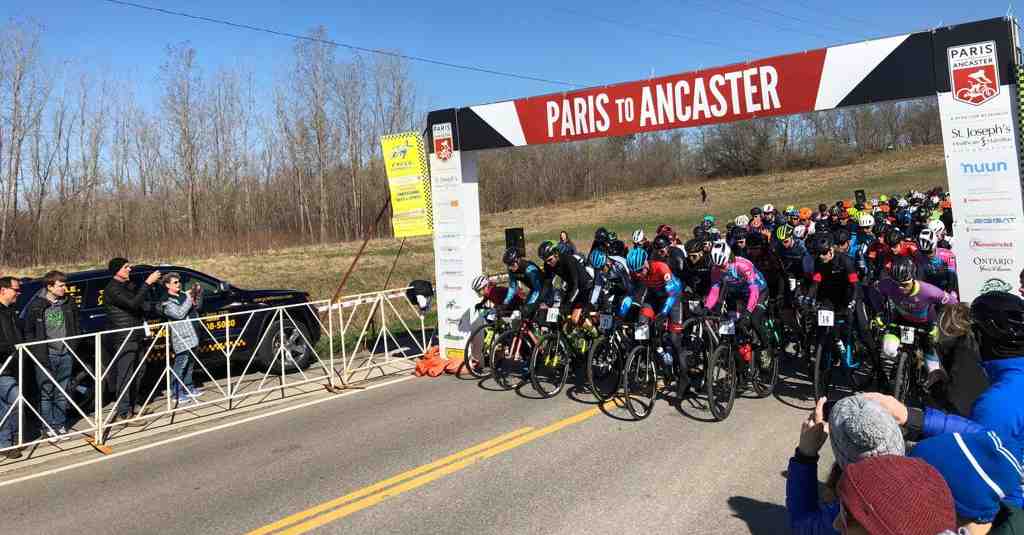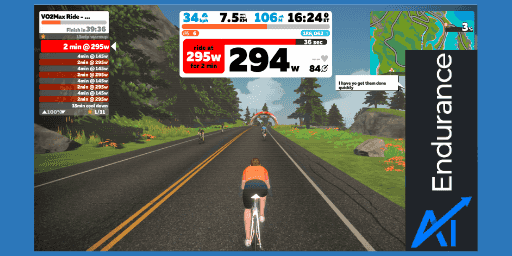
AI Endurance has a built-in race pace predictor for your running and cycling performance. In this post, we discuss how you can use it to predict your pace for your next running race or your goal power for your next cycling event.
AI Endurance’s machine learning algorithm learns how you respond to different training you have done in the past. It uses this information to create a personalized training plan that is tailored to your individual strengths and weaknesses and predicts how your performance is going to improve over time.
Let’s take the example of Alice who wants to improve her 5k time. AI Endurance provides a training plan with detailed workout instructions, plus the following chart of how Alice’s 5k time is going to improve:

At the end of a 6 week program, Alice is predicted to be able to run a 5k at 4:14 min/km pace. Her plan was selected out of thousands of different plans based on the biggest predicted performance gains for Alice individually.
Every prediction comes with a margin of error. Take the weather forecast for instance: if the forecast for tomorrow is 20 C, the margin of error is going to be small - maybe plus/minus 2 degrees C depending on where you live. If the forecast for a week from now is 20 C the margin of error is typically going to be much larger.
Similarly, AI Endurance’s performance predictor comes with a margin of error that depends on the amount and quality of the training data you have accumulated. It is shown as the band around your predicted future performance in the above plot. We also give you a percentage number for the error. For example, if the error is 5% for a predicted 20:00 5k time, that means your predicted performance is going to be 20:00 plus/minus 01:00. In other words, between 19:00 and 21:00.
Let’s say you have 12 months of data and you race a 5k once a month. We train our algorithm on 6 months (ignoring the data of month 7 - 12) and predict the 7th month. Then we compare to your actual race performance in month 7 to see how close we were. We repeat this exercise predicting month 8 based on 7 months of data and compare to your race performance in month 8, adapting our algorithm in every step, and so on and so forth. The prediction error is the average of the difference between the predictions and your actual performances. For those interested, the relevant statistical measure is cross validation for time series.
We also provide a graph that shows how well the algorithm is able to predict your performance after we have trained it on your entire data set:

The closer the two curves follow each other and the smaller the error, the better the model can predict your performance.
To get an estimate for what race pace you can achieve all you have to do is sign up to AI Endurance. We will ask you what your goals are and how much time you have available to train, and connect with your Strava. Then we can train our algorithm on your individual data and find the plan that forecasts the highest gains for you!
Thanks for reading!

Paris to Ancaster is the biggest gravel grinder bike race in Canada. It’s in 8 weeks and I need to get in shape. AI Endurance can predict race performance and create a training plan which is optimized to my training responses. It predicts that I can increase my FTP by 14% to 293 Watts on race day with just 3.5 hours of training a week.

Before every workout you should know if you're actually ready for it. Everyone responds differently to stress, bad sleep and exercise fatigue - our new recovery model makes data driven decisions about when you should train and when you shouldn't - based on heart rate variability (HRV).

Use Zwift custom workouts to grow your FTP with a data-driven, personalized Zwift custom training plan from AI Endurance.

by Markus Rummel. At AI Endurance, your optimized training plan has always been built on data — not guesswork. We start by crunching the numbers: analyzing your recovery, availability, and long-term progression to create an efficient, evidence-based plan.